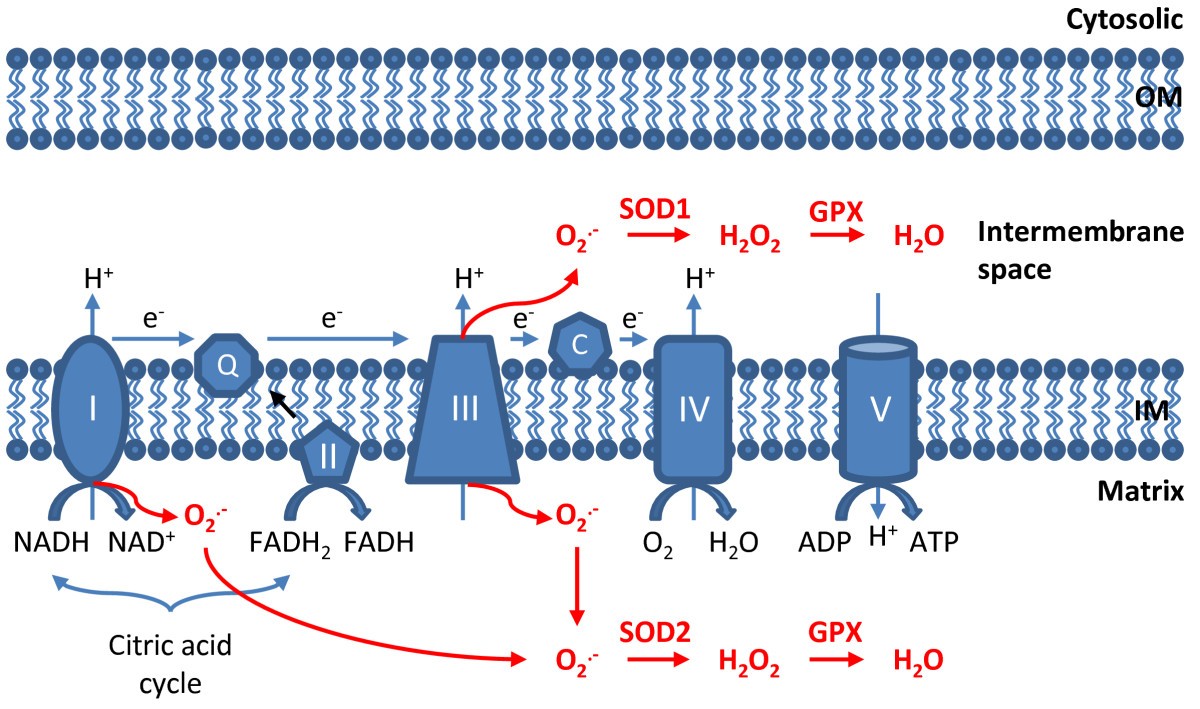Figure 1

Production and disposal of mtROS. Electrons (e-) donated from NADH and FADH2 pass through the electron transport chain and ultimately reduce O2 to form H2O at complex IV. MtROS are produced from the leakage of e- to form superoxide (O2 .-) at complex I and complex III. O2 .- is produced within matrix at complex I, whereas at complex III O2 .- is released towards both the matrix and the intermembrane space. Once generated, O2 .- is dismutated to H2O2 by superoxide dismutase 1 (SOD1) in the intermembrane space and by SOD2 in the matrix. Afterwards, H2O2 is fully reduced to water by glutathione peroxidase (GPX). Both O2 .- and H2O2 produced in this process are considered as mtROS. OM: outer membrane; IM: inner membrane.